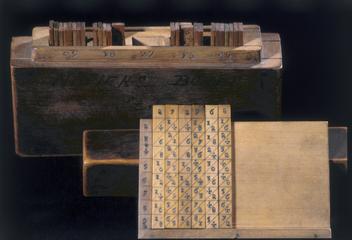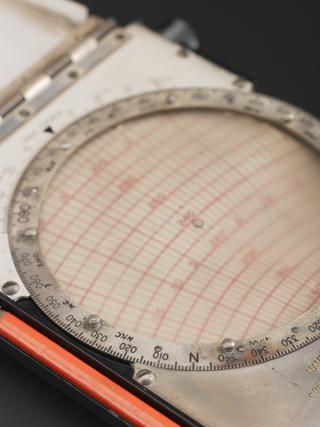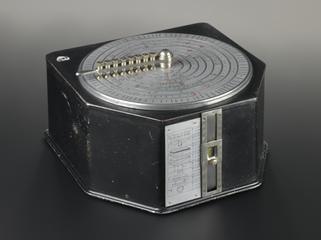
Hyperbolic paraboloid string surface model
- maker:
- Fabre de Lagrange














Hyperbolic paraboloid, made by Fabre de Lagrange, France, 1872. Formed by strings attached to two bars equally spaced, each turns on an arm perpendicular to itself and one arm swings on a pillar; these arms can be ranged in one plane.
Descriptive geometry, a new branch of the subject introduced after the French Revolution, was concerned with converting 3D figures into 2D and vice versa – especially important for architecture, shadows and perspective. In 1830 Theodore Olivier designed a series of models which could be distorted and rotated to provide a variety of geometrical configurations. They were much more effective than two-dimensional images for communicating the shapes of complex three-dimensional surfaces. Different coloured strings, weighted with lead beads hidden in the wooden bases, could be distorted and rotated, revealing a variety of surfaces simultaneously. They were produced in significant numbers and sold across the world. This example was made by the French company Fabre de Lagrange. They illustrate surfaces which can be traced out in space by the movement of a straight line. It has two bars equally spaced, each turns on an arm perpendicular to itself and one arm swings on a pillar; these arms can be ranged in one plane, and also turned end for end. After the First World War, models appeared in galleries and museums as historical curios, where they began to reach another audience: avant-garde artists, who found in them not guidance for abstract thinking but inspiration for exploring shape and form.
Details
- Category:
- Mathematics
- Object Number:
- 1872-93
- Materials:
- complete, brass (copper, zinc alloy), lead (metal), wood (unidentified) and string
- Measurements:
-
overall: 740 mm x 290 mm x 290 mm,
- type:
- surface models and string surface models
- credit:
- Purchased from Fabre de Lagrange




